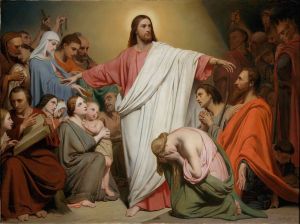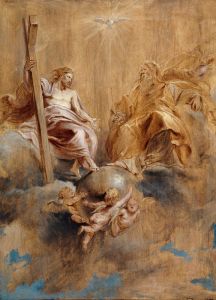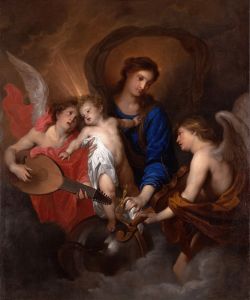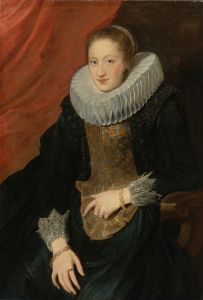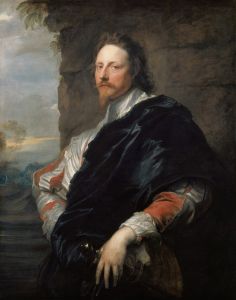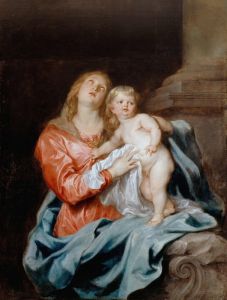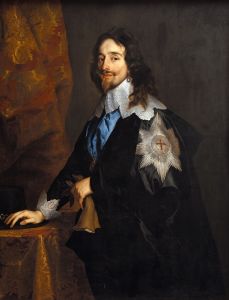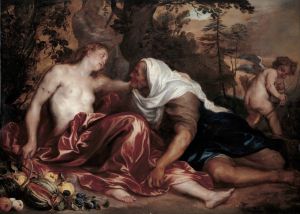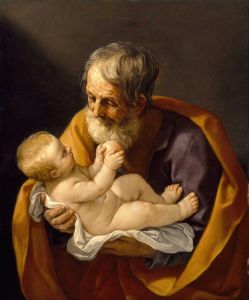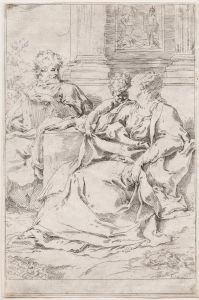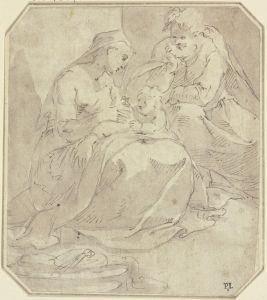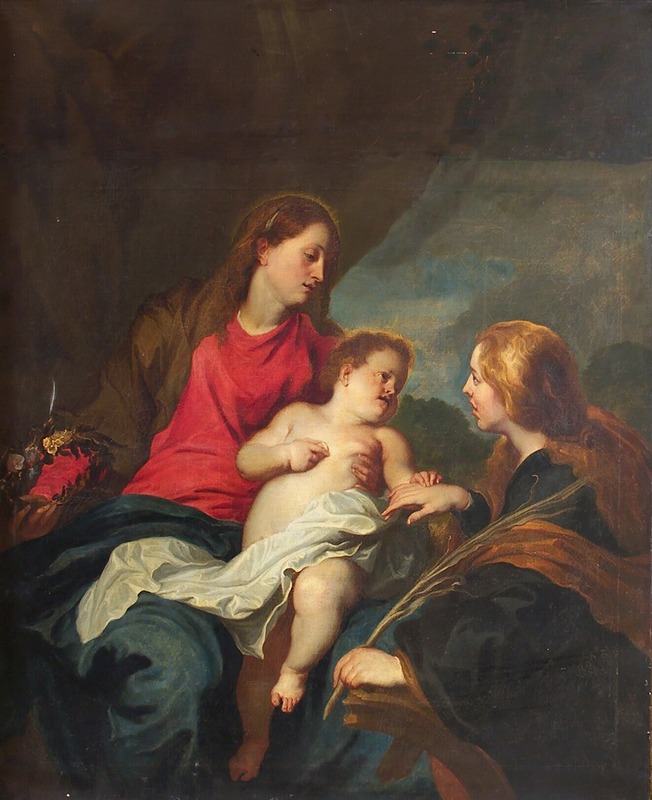
The Mystic Marriage of St Catherine of Alexandria
A hand-painted replica of Anthony van Dyck’s masterpiece The Mystic Marriage of St Catherine of Alexandria, meticulously crafted by professional artists to capture the true essence of the original. Each piece is created with museum-quality canvas and rare mineral pigments, carefully painted by experienced artists with delicate brushstrokes and rich, layered colors to perfectly recreate the texture of the original artwork. Unlike machine-printed reproductions, this hand-painted version brings the painting to life, infused with the artist’s emotions and skill in every stroke. Whether for personal collection or home decoration, it instantly elevates the artistic atmosphere of any space.
"The Mystic Marriage of St Catherine of Alexandria" is a notable painting by the Flemish Baroque artist Anthony van Dyck, created during the early 17th century. Van Dyck, a prominent figure in the Baroque movement, was known for his portraits and religious compositions, and this painting is a fine example of his work in the latter genre.
The painting depicts the mystical marriage of Saint Catherine of Alexandria, a popular theme in Christian art. According to legend, Saint Catherine was a Christian martyr from the early 4th century who was known for her intelligence and eloquence. She is said to have had a vision in which she was mystically married to Christ, symbolizing her spiritual union with Him. This theme was often used in art to convey the idea of a soul's union with the divine.
In van Dyck's rendition, Saint Catherine is portrayed with characteristic grace and beauty, a hallmark of the artist's style. She is typically shown receiving a ring from the Christ Child, who is held by the Virgin Mary, signifying her spiritual betrothal. The composition is intimate and tender, capturing the mystical and sacred nature of the event. Van Dyck's use of light and shadow enhances the ethereal quality of the scene, drawing the viewer's attention to the central figures and their expressions.
Van Dyck's technique in this painting reflects his mastery of color and form, influenced by his time spent in Italy, where he studied the works of the great masters such as Titian and Rubens. His ability to convey emotion and depth through his brushwork is evident in the delicate rendering of the figures and the soft, harmonious palette.
The painting is also notable for its composition, which demonstrates van Dyck's skill in creating a balanced and harmonious arrangement of figures. The placement of the Virgin Mary, the Christ Child, and Saint Catherine creates a triangular composition, a common device in Renaissance and Baroque art that guides the viewer's eye through the painting.
"The Mystic Marriage of St Catherine of Alexandria" is housed in the Museo del Prado in Madrid, Spain. The museum, one of the most prestigious art institutions in the world, holds an extensive collection of European art, and van Dyck's work is a significant part of its collection. The painting is an important example of van Dyck's religious works and showcases his ability to blend spiritual themes with the Baroque style's dramatic and emotional elements.
Overall, "The Mystic Marriage of St Catherine of Alexandria" exemplifies Anthony van Dyck's artistic prowess and his contribution to Baroque art. The painting remains a testament to his skill in capturing the divine and the human in a single, harmonious composition, continuing to be admired by art enthusiasts and scholars alike.





